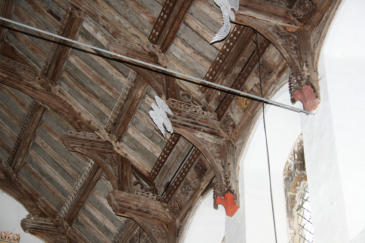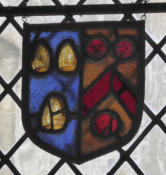
The
Friends
meet
p
e
r
i
o
d
i
c
a
l
l
y
,
a
p
p
r
o
x
i
m
a
t
e
l
y
monthly,
at
7:00pm,
usually
in
the
Community
Room
at
the
Church,
to
plan
and
organise
fundraising
and
other
events
and
to
discuss
funding
needs.
There
is
no
fixed
committee
membership
so
if
you
would
like
to
be
involved
just
give
us
a call and turn up!
For
information
on
church
,
including
events,
service
times,
contact
details
and
for
all
church
matters,
please
visit
St Mary’s
church
website
at
A Church
Near You.
Next Meeting
.
The
next
meeting
will
be
held
on
Thursday
12th
February
2026
in
St
Mary’s
church
starting
at
7.00pm.
Everybody
welcome.
Minutes
of
the
last
and
all
previous
meetings
and
Treasurer’s
reports
can
be
found
in the Archive
.
The
Friends
of
St
Mary’s,
Bacton
is
a
registered
Charity
No
1106579.
By
using
this
site
you
agree to our
Terms and Conditions
Site by Andy
Last updated
19th January 2026
St Mary’s, Bacton
St
Mary’s
Church,
Bacton
is
a
remarkable
building.
Dating
from
the
14th
and
15th
centuries,
it
replaced
a
church
that
existed
in
Saxon
times
(it
is
mentioned
in
the
Domesday
Book
of
1085)
probably
on
the
same
site.
It
is
built
from
flint,
rubble
and
lime
mortar
with
knapped
flint
used
for
much
of
the
decoration.
The
first
record
of
a
rector
is
of
one
John
de
Gysslingham,
installed
by
the
Bishop
of
Norwich
in
1311.
Although
the
tower
was
given
a
100ft
slate-roofed
spire
in
the
18th
century,
this
was
removed
in
1935
when
it
was
deemed
to
be
unsafe.
The
hammer
beam
roof
is
actually
a
false
double
hammer
beam
roof
because
the
upper
tier
of
hammer
beams
themselves
do
not
carry
columns
to
support
the
rafters
above
and
serve
only
as
decoration,
the
upper
part
of
the
roof
being
supported
by
arches.
Probably
constructed
by
a
family
of
Bacton
carpenters,
who
were
also
responsible
for
a
number
of
other
roofs
around
Suffolk
and
other
counties, this seems to have been a feature of their roofs.
As
with
many
other
churches
in
East
Anglia
and
around
the
country,
hammer
beam
roofs
were
frequently
adorned
with
Angels
on
the
ends
of
the
hammer
beams,
the
first
of
which
were
in
Westminster
Hall
in
London.
The
angels
on
many
roofs
were
destroyed
in
the
1640s
when
radical
Protestants
believed
that
such
icons
were
an
obstruction
to
true
Reformation.
Overseeing
this
destruction
throughout
East
Anglia
was
one
William
Dowsing,
then
living
at
Stratford
St
Mary
in
Essex
who,
unfortunately
for
East
Anglia,
seems
to
have
been
particularly
zealous
in
his
task.
His
power
ended
when
his
patron,
the
Earl
of
Manchester,
fell
from
favour
saving
the
angels
of
many
roofs
from
destruction
but,
unfortunately, not those of St Mary’s.
The
Friends
tried
for
several
years
to
start
a
programme
for
the
replacement
of
the
angels
but
for
a
number
of
reasons,
not
just
financial,
this
has
never
come
to
fruition.
Cardboard
cut-outs
were
made
and
put
in
place
temporarily
(pictured
above) to help visualise what they might have looked like.
Further reading: The Angel Roofs of East Anglia by Michael Rimmer, Lutterworth Press, 2015. ISBN 978 0 7188 9369 9
The
parclose
screen
which
was
moved
to
replace
an
earlier
rood
screen
across
the
chancel
has
been
removed
and,
following
some
restoration,
is
now
on
view
in
the
organ
loft.
The
original
rood
screen
was
probably
destroyed
in
the
16th century.
The
East
window
behind
the
altar
was
installed
as
a
memorial
to
Bacton
parishioners
who
died
during
the
First
World
War,
whilst
the
east-facing
windows
in
the
North
and
South
aisles
are
of
medieval
glass
and
bear
the
arms
respectively
of
Bishop
Nykke
(or
Nix),
Bishop
of
Norwich
and
Lord
of
the
Bacton
manor
from
1501
until
his
death
in
1536
and
of
the
Underwood
family
(John
Underwood
was
rector
from 1519 to 1527).
The
Doom
painting
in
St
Mary’s,
dating
from
the
15th
century,
may
not
be
the
finest
example
of
its
kind
but
it
is
no
less
important
for
that.
It
depicts
souls
at
the
gates
of
heaven
on
the
day
of
judgement
being
confronted
by
St
Peter.
The
Friends
made
a
significant
contribution
toward
the
conservation
of
the
Doom
painting
which
was
completed
by
the
conservator,
Andrea
Kirkham,
in
2018.
The
work
first
required
substantial
repairs
to
the
exterior
of
the
chancel
wall
on
which
the
painting
is
located
and
the
re-routing
of
some
electrical
cabling
before
the
work
could
be
started.
The
painstaking
and
time-consuming
work
means
that
the
painting
will
remain
a
great
feature
of
St
Mary’s,
safe
from
the
ravages
of
time
and
damp,
to
be
enjoyed
for
many
years
to come.
See the project archive for more information
.
There
are
many
more
interesting
features
of
the
church,
its
decorations,
its
memorials
and
its
history
described
in
detail in the church Guide Book available in the church. (The church is normally open during daylight hours).
In
addition
to
the
memorial
to
those
parishioners
who
died
in
the
two
world
wars,
there
are
four
Commonwealth
War
Graves
in
the
main
churchyard
and
a
further
three
in
the
cemetery
behind
the
primary school.







The Arms of
Bishop Nykke
(or Nix)

The Arms of the
Underwood family




























